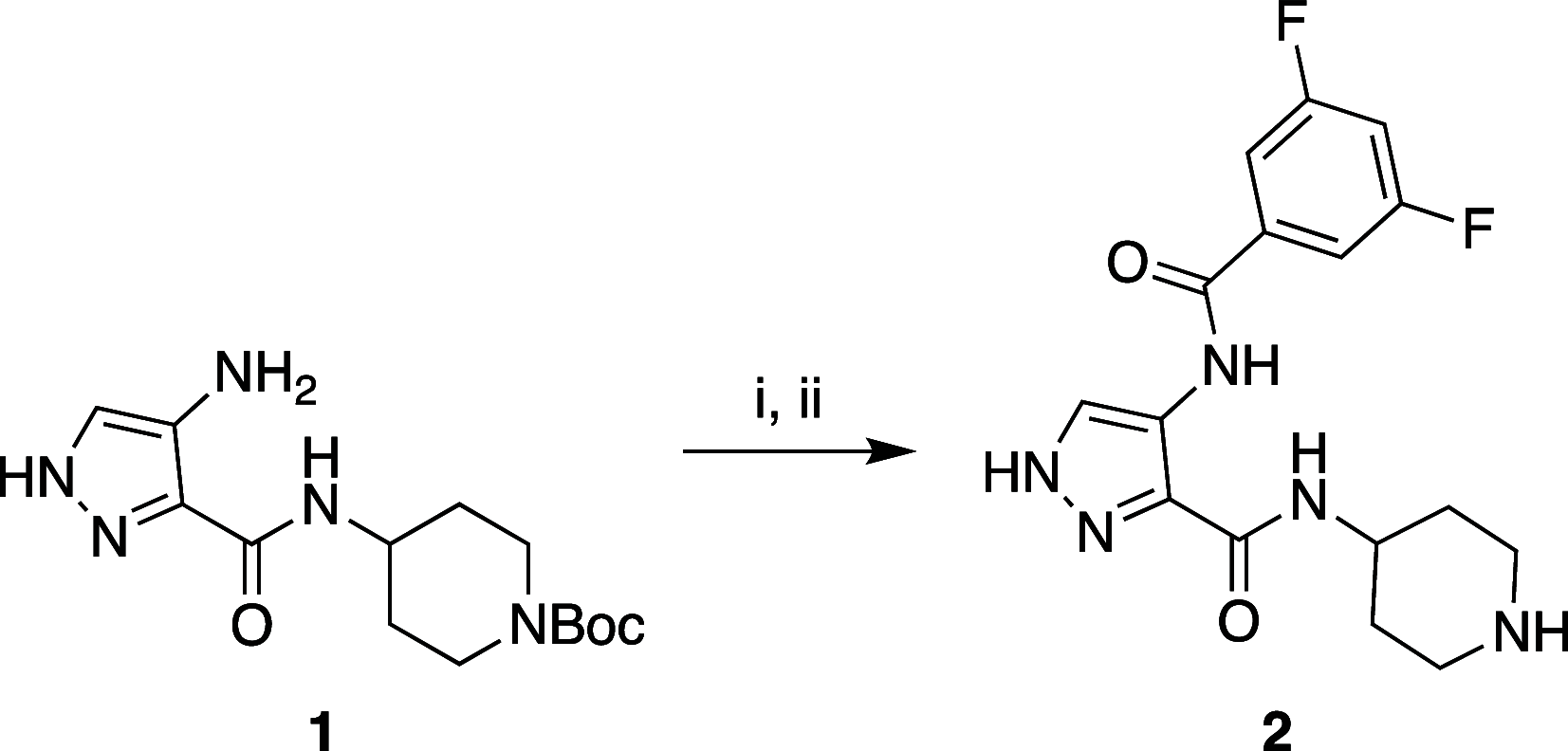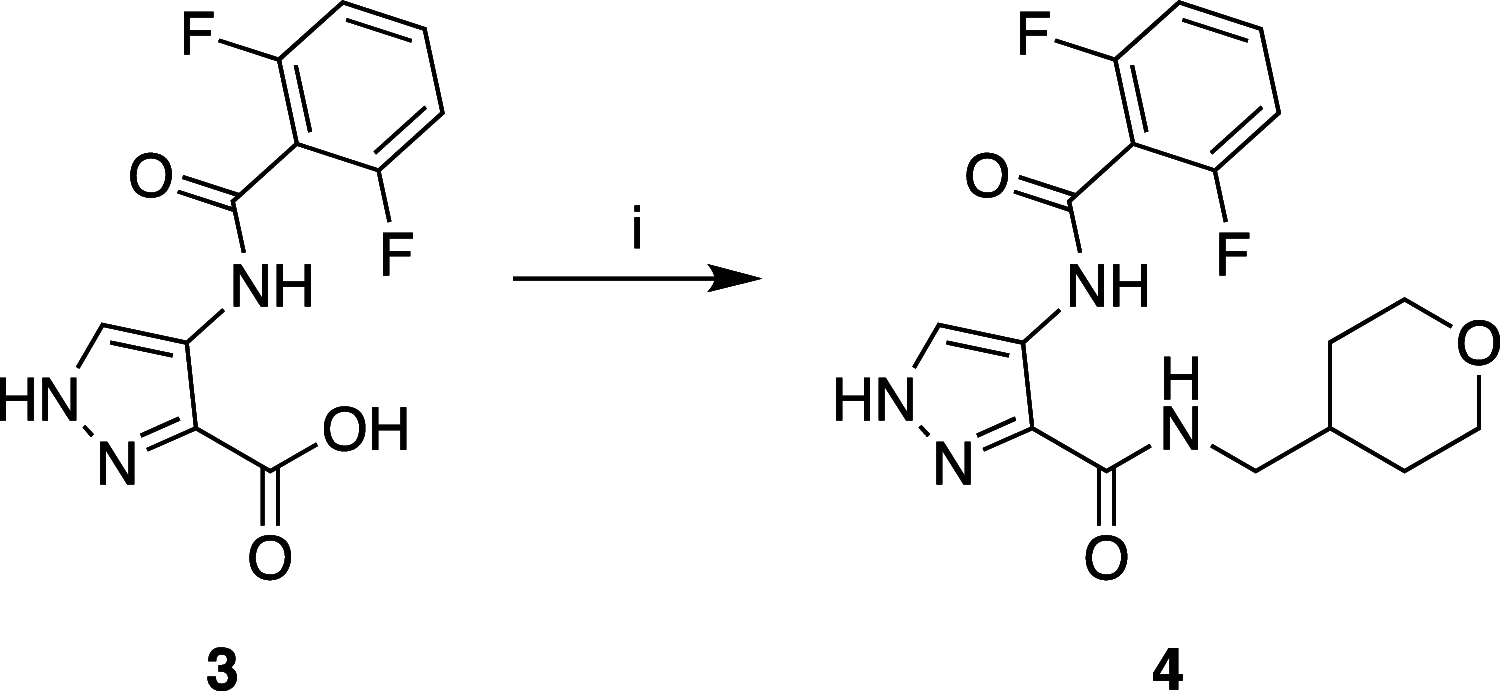Discovery of a Potent and Selective CDKL5/GSK3 Chemical Probe That Is Neuroprotective
- PMID: 37084253
- PMCID: PMC10161233
- DOI: 10.1021/acschemneuro.3c00135
Discovery of a Potent and Selective CDKL5/GSK3 Chemical Probe That Is Neuroprotective
Abstract
Despite mediating several essential processes in the brain, including during development, cyclin-dependent kinase-like 5 (CDKL5) remains a poorly characterized human protein kinase. Accordingly, its substrates, functions, and regulatory mechanisms have not been fully described. We realized that availability of a potent and selective small molecule probe targeting CDKL5 could enable illumination of its roles in normal development as well as in diseases where it has become aberrant due to mutation. We prepared analogs of AT-7519, a compound that has advanced to phase II clinical trials and is a known inhibitor of several cyclin-dependent kinases (CDKs) and cyclin-dependent kinase-like kinases (CDKLs). We identified analog 2 as a highly potent and cell-active chemical probe for CDKL5/GSK3 (glycogen synthase kinase 3). Evaluation of its kinome-wide selectivity confirmed that analog 2 demonstrates excellent selectivity and only retains GSK3α/β affinity. We next demonstrated the inhibition of downstream CDKL5 and GSK3α/β signaling and solved a co-crystal structure of analog 2 bound to human CDKL5. A structurally similar analog (4) proved to lack CDKL5 affinity and maintain potent and selective inhibition of GSK3α/β, making it a suitable negative control. Finally, we used our chemical probe pair (2 and 4) to demonstrate that inhibition of CDKL5 and/or GSK3α/β promotes the survival of human motor neurons exposed to endoplasmic reticulum stress. We have demonstrated a neuroprotective phenotype elicited by our chemical probe pair and exemplified the utility of our compounds to characterize the role of CDKL5/GSK3 in neurons and beyond.
Keywords: CDKL5; GSK3α; GSK3β; chemical probe; crystal structure; kinase; neuroprotective.
Conflict of interest statement
The authors declare no competing financial interest.
Figures











Update of
-
A Potent and Selective CDKL5/GSK3 Chemical Probe is Neuroprotective.bioRxiv [Preprint]. 2023 Feb 10:2023.02.09.527935. doi: 10.1101/2023.02.09.527935. bioRxiv. 2023. Update in: ACS Chem Neurosci. 2023 May 3;14(9):1672-1685. doi: 10.1021/acschemneuro.3c00135. PMID: 36798313 Free PMC article. Updated. Preprint.
References
-
- Ricciardi S.; Ungaro F.; Hambrock M.; Rademacher N.; Stefanelli G.; Brambilla D.; Sessa A.; Magagnotti C.; Bachi A.; Giarda E.; et al. CDKL5 ensures excitatory synapse stability by reinforcing NGL-1-PSD95 interaction in the postsynaptic compartment and is impaired in patient iPSC-derived neurons. Nat. Cell Biol. 2012, 14, 911–923. 10.1038/ncb2566. - DOI - PMC - PubMed
-
- Fuchs C.; Trazzi S.; Torricella R.; Viggiano R.; De Franceschi M.; Amendola E.; Gross C.; Calzà L.; Bartesaghi R.; Ciani E. Loss of CDKL5 impairs survival and dendritic growth of newborn neurons by altering AKT/GSK-3β signaling. Neurobiol. Dis. 2014, 70, 53–68. 10.1016/j.nbd.2014.06.006. - DOI - PMC - PubMed
-
- Barbiero I.; Valente D.; Chandola C.; Magi F.; Bergo A.; Monteonofrio L.; Tramarin M.; Fazzari M.; Soddu S.; Landsberger N.; Rinaldo C.; Kilstrup-Nielsen C. CDKL5 localizes at the centrosome and midbody and is required for faithful cell division. Sci. Rep. 2017, 7, 6228.10.1038/s41598-017-05875-z. - DOI - PMC - PubMed
Publication types
MeSH terms
Substances
Grants and funding
LinkOut - more resources
Full Text Sources

